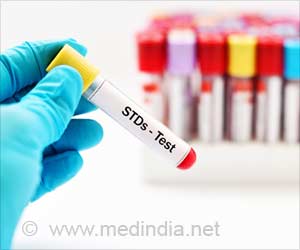Syphilis related search items and tweets can help trace the trend the of the disease and may help predict the next possible outbreak, finds a new study.

‘After learning the process, artificial intelligence-based machine predicted 144 weeks of syphilis counts for each state with 90 percent accuracy, allowing them to predict state-level trends in syphilis before they would have occurred.’





"These two studies suggest that social media and internet search data might help to fix this problem by predicting when and where future syphilis cases may occur. This could be a tool that government agencies such as the CDC might use," added Young, who is also an associate professor of family medicine at the David Geffen School of Medicine at UCLA.One study, to be published in the peer-reviewed journal Epidemiology, investigated the association between state-level search queries on Google with primary and secondary syphilis cases -- the earliest and most transmissible stages in the sexually transmitted infection -- that were subsequently reported in these states.
For this study, the researchers compiled data for 25 keywords and phrases (such as "find sex" and "STD") collected on Google Trends from Jan. 1, 2012, to Dec. 31, 2014. They also obtained weekly county-level syphilis data from the CDC covering the same time period for all 50 states, merged that data by state and collated them with the weekly Google Trends data they had collected.
The research incorporated a type of statistical computer science model called machine learning, which can look through large amounts of data to find patterns and predict those patterns. This artificial intelligence-based machine looked at the relationship between people’s syphilis-related searches on Google and actual rates of syphilis over a period of time. After learning that pattern, it tested whether it could accurately predict future syphilis cases by using just the syphilis-related Google search terms.
Researchers found that the model predicted 144 weeks of syphilis counts for each state with 90 percent accuracy, allowing them to predict state-level trends in syphilis before they would have occurred.
Advertisement
They reviewed weekly county-level cases of primary and secondary syphilis and early latent syphilis (infection within the previous 12 months, with no symptoms evident) that likely occurred over the previous 12 months. The cases were from the 50 states and Washington, D.C., and were reported to the CDC from 2012 to 2013. The 2012 data were included because a county’s previous syphilis rates are likely to predict future rates, and they wanted to determine how the Twitter-based method would perform matched with the previous year’s data.
Advertisement
By comparison, counties that reported higher numbers of syphilis cases in 2012 were associated with increases of 0.6 percent and 0.4 percent of primary/secondary and early latent syphilis cases, respectively, in 2013, suggesting that the Twitter-based model performed as well as simply using previous year’s syphilis data. This is important because Twitter data are extremely inexpensive and suggest that social media data are low-cost alternatives for predicting syphilis.
Both studies have certain limitations. For the Google paper, they include the likelihood that many primary and secondary syphilis cases are not reported; the findings were biased toward Google users, who account for about 64 percent of search engine users; and the Google Trends data are a random sampling of all data and not the full dataset, which might have affected how the model worked.
In the Twitter study’s case, data were based on Twitter users, which is a select sample of people; the researchers reviewed data only for 2012 and 2013, when data from a longer time span would be needed to develop appropriate public health responses; and some areas with high numbers of syphilis cases may have had public health messaging via social media that contained relevant keywords that were captured in the data the researchers examined.
Source-Eureka alert














